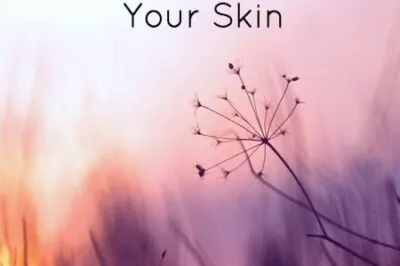You know that pollution is bad for your health. Maybe you take steps to reduce your exposure, like using an air purifier, growing houseplants, and boosting your immune system.
Here’s another reason to double your efforts against pollution: new research shows that it may affect your appearance.
According to recent studies, exposure to airborne toxic chemicals can actually cause age spots, premature fine lines and wrinkles, and sagging and bagging.
What can you do to protect your skin? Keep reading!
Pollution Can Increase Risk of Kidney Problems and Cancer
According to the Environmental Protection Agency (EPA), pollution affects us in the following ways:
- Ozone affects lung function and causes respiratory inflammation even in normal people during exercise. Repeated exposure can cause permanent damage in the lungs.
- Nitrogen dioxide irritates lungs, lowers resistance to infections like the flu, and over the long-term, can increase risk of acute respiratory illnesses in children.
- Particulate matter (solid or liquid particles in the air, like soot) can damage lung tissue and have been linked to cancer and premature death.
- Sulfur dioxide affects breathing and aggravates existing cardiovascular disease.
- Lead exposure can cause kidney disease, reproductive disorders, seizures, and behavioral disorders.
- Carbon monoxide, at high levels, is associated with visual impairment, poor learning ability, and complications from cardiovascular disease.
These are just a few of the potential health effects from pollution. Most of us are somewhat aware of these risks, and support national efforts to reduce emissions.
What most of us don’t know is that every time we walk around in a polluted area, we’re potentially aging our skin.
The Connection Between Pollution and Skin Aging
It was the Journal of Investigative Dermatology that first made it very clear. Scientists assessed the skin of 400 Caucasian women between the age of 70 and 80 years old. Using various scientific methods, they measured how much the skin had aged.
They then looked at where the women lived, and took measurements of traffic particle emissions. They also tested the dust in the homes, and analyzed it for soot and other pollutants. Finally, they tested so-called “background” pollution by measuring ambient particles at fixed monitoring sites.
They then examined the results of all their measurements, and determined the following:
- Air pollution exposure was significantly correlated to signs of skin aging, including hyperpigmentation, age spots, and wrinkles.
- An increase in soot and particles from traffic was associated with 20 percent more age spots on the forehead and cheeks.
- Increased traffic particles were associated with a 16 percent increase in age spots on the forehead and 17 percent more on the cheeks.
- All types of pollution were also found to be connected with a more pronounced nasolabial fold (smile wrinkles).
- Background pollution was associated with an increased risk of age spots.
“To our knowledge,” the scientists wrote, “this is the first study to describe an association between airborne particles and extrinsic aging.”
More Recent Research Confirms the Results
That was in 2010. So are there more recent studies that confirm that connection between pollution and skin aging?
Mid-year, the Journal of Dermatological Science published an review on pollution and skin. They looked at research that has been conducted so far, collaborating with a board of experts on environmental health, and on clinical research in dermatology and cosmetic dermatology. They chose only studies that looked at the issue of the effects of pollution on skin, and found:
- Pollution-induced skin damage is a global problem
- Ozone depletes antioxidants from the skin
- Exposure to ambient particulate matter contributes to premature skin aging
- Air pollution is damaging to healthy and diseased skin
- Individuals with sensitive skin may be even more susceptible to pollution damage
5 Tips to Keep Your Skin Looking Young
Wherever you live, you’re likely exposed to at least some level of airborne pollution. Try the following tips to help keep your skin looking young:
- Cleanse thoroughly! Maybe you skip washing your face at night sometimes, especially if you’re not wearing makeup. But getting that pollution off your skin is just another reason why you must cleanse thoroughly—especially at night—if you want to maintain young, vibrant skin. We have two great cleansers that will do the job very well: our bestselling Aloe-Herb Facial Cleanser (read more about this product here), and our Citrus Mint Facial Cleanser. But no matter what you use, be sure it’s something that leaves your skin thoroughly cleansed without causing dryness.
- Hydrate: Hydrated skin is healthier skin. That means it’s better able to protect itself from environmental stressors. Once skin becomes dry, the outer layer is compromised, which can create tiny cracks in skin that allow impurities through. Your skin has a natural barrier that it uses to protect itself. Keep this barrier healthy by always keeping skin properly hydrated. Never let it get dry and tight! When choosing a moisturizer, make sure it doesn’t contain any drying ingredients.
- Exfoliate: This is part of any healthy skin care regimen. Exfoliation offers an extra cleansing opportunity that gets deep into your pores to remove impurities. Try something with siliceous earth to thoroughly exfoliate and give your skin a polished look.
- Feed your skin antioxidants: Antioxidants are your best defense against environmental stressors. That means that to keep your skin looking young, you want to get more of them inside and out. Your healthy diet provides the inside delivery—things like fruits, veggies, tea, and dark chocolate are all full of healthy, protective antioxidants your skin needs. Plant-based skin care products provide outside delivery—things like superoxide dismutase (in our Citrus Stem Cell Serum), cranberry oil, acai berry, and vitamin E, which are all powerful topical antioxidants that go to work protecting. (Our products have all these antioxidants and more, by the way!) A steady diet of these beneficial compounds can go a long way.
- Protect: You hear it all the time—sunscreen protects skin. Did you know it can protect you from the damaging effects of pollution as well? That’s because UV rays can actually work together with toxic particles in the air to increase damage to the skin. So if you are exposed to pollution, and then you go outside and are exposed to UV rays, you just gave the toxic particles a power boost. Use a safe sunscreen like zinc oxide, even when it’s cloudy outside!
Were you aware of pollution’s damaging effect on skin? Please share your thoughts.
Sources
Andrea Vierkotter, et al., “Airborne Particle Exposure and Extrinsic Skin Aging,” Journal of Investigative
Dermatology, July 22, 2010; (130):2719-2726, http://www.nature.com/jid/journal/v130/n12/full/jid2010204a.html.
Jean Krutmann, et al., “Pollution and skin: From epidemiological and mechanistic studies to clinical
implications,” Journal of Dermatological Science, September 13, 2014;
1811(14)00193-5/abstract.






Leave a Reply